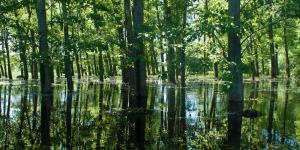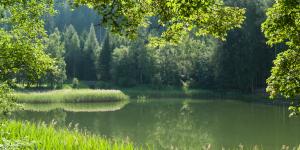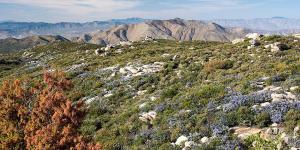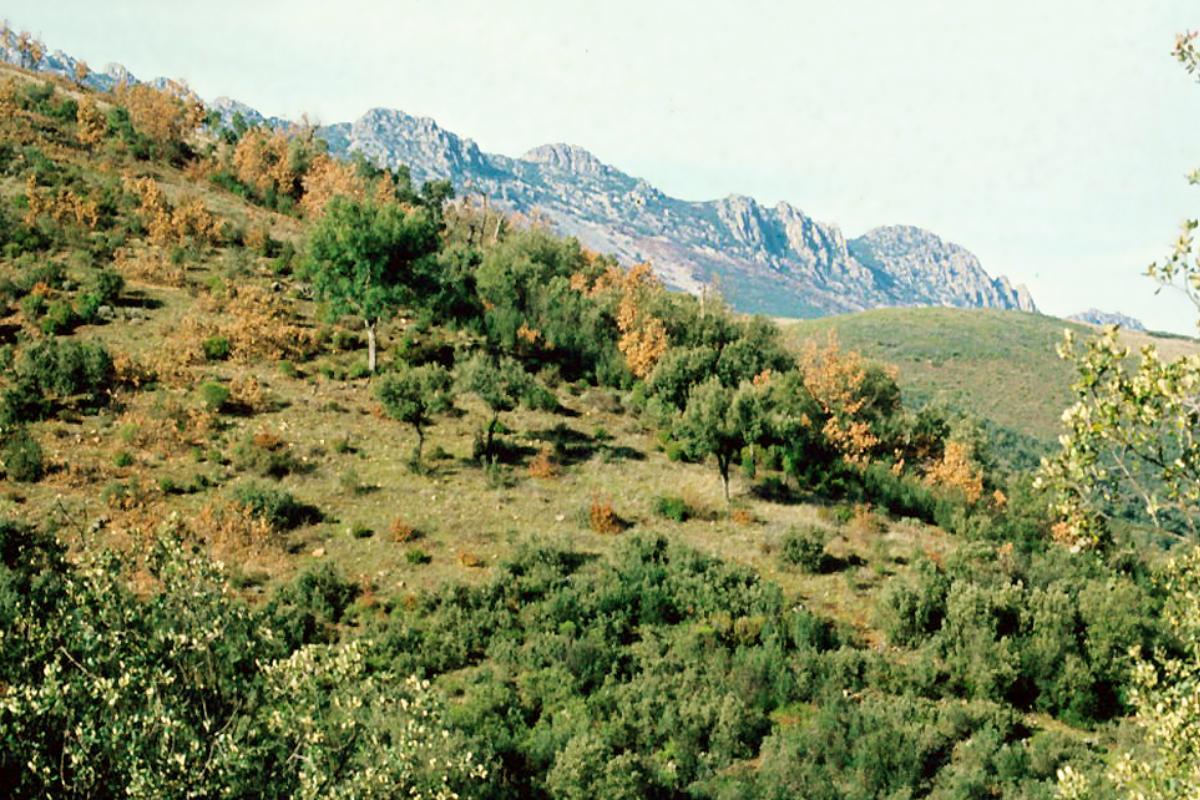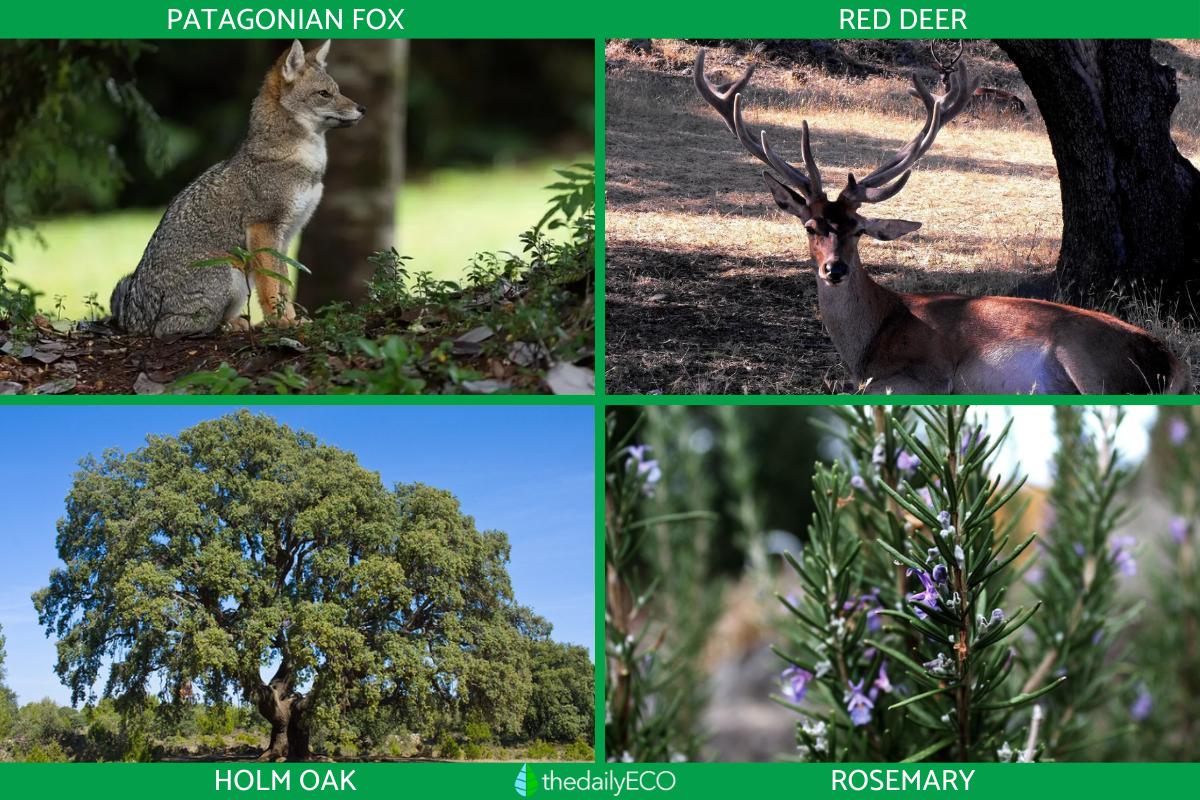What Is a Sclerophyllous Forest?


A sclerophyllous forest is an ecosystem characterized by the presence of vegetation adapted to Mediterranean climate conditions. This is largely defined by its dry summers with hot temperatures and wet winters which are relatively mild. The flora and fauna of these ecosystems have specific adaptations to survive in environments where water availability is limited for much of the year. Some species of flora and fauna that inhabit sclerophyllous forests are the Patagonian fox, roe deer, degu, holm oak, strawberry tree and rosemary.
In this article from thedailyECO, we ask what is a sclerophyllous forest? We look at the vegetation, climate and animals which help to define these ecosystems.
What is sclerophyllous forest?
Sclerophyllous forest is a type of ecosystem characteristic of regions with a Mediterranean climate. While we may associate this with the eponymous region in Europe, this type of climate is found in various corners of the world, including South America, North America and South Africa. The word sclerophyllous comes from Greek and means ‘hard leaves’, referring to the small, thick, leathery leaves of the plants that predominate in this type of forest.
Sclerophyll vegetation has evolved to adapt to climatic conditions where summers are hot and dry, while winters are mild and humid. Due to these climatic conditions, plants in sclerophyllous forest have developed several adaptations that allow them to survive in water-scarce environments for long periods.
In terms of biodiversity, the sclerophyllous forest is home to a wide variety of both plant and animal species, many of which are endemic. This means they are not found anywhere else in the world. Among the most common plant species in sclerophyllous forests are quillay, boldo, litre and peumo in Chile, and species such as holm oak and cork oak in the Mediterranean region of Europe.

What is the climate of the sclerophyllous forest like?
The climate of the sclerophyllous forest is characterized as Mediterranean, meaning it has a marked seasonality with hot, dry summers and mild, humid winters. This type of climate is key to the adaptation of the species that inhabit these forests.
During the summer, temperatures can be quite high and easily exceed 86ºF/30ºC in some regions. However, the most notable feature of this season is the lack of rainfall. Summers are long and dry, creating water-stressed conditions for plants. In response, many species in the sclerophyllous forest have developed small leaves with a thick cuticle that reduces water loss through transpiration. In addition, many plants have deep root systems that allow them to access underground water reserves.
In contrast, winter in these forests is milder in terms of temperatures. The range at this time generally oscillates between 41-59ºF (5-15ºC ), depending on the specific region. The most important thing about winter is that it is the season in which most of the annual rainfall is concentrated. These rains are essential for the recharging of water in the soil and for the survival of plants during the dry season.
Discover the different types of Mediterranean seabirds with our related article.
Flora and fauna of sclerophyllous forests
Animals of the sclerophyllous forest
- The sclerophyllous forest is home to a wide variety of fauna, adapted to the particular conditions of this ecosystem. The diversity of habitats it offers range from more open and sunny areas to denser and shaded zones. This means these types of forest can support a rich community of animals, many of which are endemic, i.e. they are found only in these regions.
- Among the mammals that inhabit the sclerophyllous forest, there are species such as the culpeo fox and the Patagonian fox, as well as the red deer in Europe. These animals are generally omnivores or carnivores, adapted to hunt or search for food in an environment where resources can be scarce during the summer. It is also common to find rodents, such as the degu in South America or the dormouse in the Mediterranean basin. These have developed nocturnal or burrowing habits to avoid high daytime temperatures and conserve water.
- Birds are a prominent component of the fauna of sclerophyllous forests. For example, an endemic parrot species known as the slender-billed parakeet can be found in Chile. In the European Mediterranean region, species such as the booted eagle and the blackcap are common. Many birds in these forests are insectivorous, while others feed on fruits and seeds, contributing to the dispersal of plant seeds.
- As for reptiles, the sclerophyllous forest is also home to several species adapted to the dry and hot climate. In Chile, there are lizards such as the thin lizard and the rock lizard which have adapted to arid conditions. In the Mediterranean basin, it is common to find vipers such as the horned viper, as well as several species of lizards and geckos. Learn the difference between geckos and salamanders in our related article.
- Although less common due to the dry environment, amphibians are also present in sclerophyllous forests. This is especially in areas close to bodies of water that remain during the winter. For example, some species of toads and frogs can be found that take advantage of temporary ponds to reproduce during the rainy season.
- Insects and other invertebrates play a key role in the sclerophyllous forest ecosystem. Many species of beetles, butterflies and bees are essential for plant pollination. In addition, decomposing insects help recycle soil nutrients, closing the ecological cycle.
Sclerophyllous vegetation
- Sclerophyllous vegetation is the most distinctive feature of sclerophyllous forests. It is characterized by the presence of plants with small, tough and leathery leaves designed to withstand prolonged drought conditions and high temperatures during the summer. These adaptations are essential for survival in a Mediterranean climate, where summers are dry and winters are wet and relatively short.
- One of the most important characteristics of sclerophyllous plants is their resistance to water stress. The tough leaves are covered by a thick cuticle to reduce water loss through transpiration. In addition, many of these plants have evergreen leaves, meaning they keep their foliage all year round. This allows them to make the most of the moisture available during the winter and to minimize the need for resources during the dry summer.
- In the European Mediterranean basin, species such as holm oak (Quercus ilex), cork oak (Quercus suber), and strawberry tree (Arbutus unedo) are common. Holm oak and cork oak are particularly notable for their ability to thrive in poor, rocky soils, and for their resistance to forest fires. This is a frequent threat in these ecosystems. The cork oak is also known for its bark, which is used for cork production. Learn more about pyrophytic plants, plants that use fire to survive.
- The sclerophyllous understory, or the lower vegetation growing beneath the upper layer of trees, is also rich and diverse. In the European Mediterranean region, rosemary (Rosmarinus officinalis), lavender (Lavandula spp.), and thyme (Thymus vulgaris) are examples of aromatic plants that thrive in the understory. You may be aware of their use in perfumes and culinary pursuits.
Learn about another ecosystem defined by its vegetation with our article on what is a chaparral biome?

If you want to read similar articles to What Is a Sclerophyllous Forest?, we recommend you visit our Ecosystems category.
- Mediterranean sclerophyllous forest. Analysis of the flora and soil of the sclerophyllous forest. University of Valencia. Studocu.
https://www.studocu.com/es/document/universitat-de-valencia/biologia/analisis-de-la-flora-y-el-suelo-del-bosque-esclerofilo/23634310 - Martín Estallo, O. April 4, 2013. The Mediterranean sclerophyllous forest. Sierra del Peco (Zaragoza). Holartica.
https://holartica.blogspot.com/2013/04/el-bosque-esclerofilo-mediterraneo.html - Vascular flora of a remnant of coastal Mediterranean sclerophyllous forest: Hualpén Terrestrial Biology Station, Biobío Region, Chile. Gayana Bótanica, 75(1), 466-481.
https://dx.doi.org/10.4067/S0717-66432018000100466


